So you've got a new product idea. What's next on your list? Sure, you'll want to get a time and cost estimate.
However, no software development company is likely to be able to give you an accurate timeline and development cost upon your request. The thing is, to give you an estimate, your software development partner needs more information than you think. Is there a solution to this situation? Yes, there is! It's called project discovery.
In this article, we will give a brief overview of a product discovery phase based on our practice. Below, we cover the product discovery goals, main tasks, and results for you.
What is a project discovery phase?
Software product discovery is the very foundation of any successful custom software product. This stage aims to collect and analyze valuable information concerning the client's business, goals, and challenges to define the requirements of the project clearly. Businesses can save many misunderstandings at an early stage by investing in this stage. Moreover, the outcomes are an accurate estimation of the project scope, budget, and time.
Key reasons to hold product discovery sessions
A well-run product discovery can save time and reduce risks, while also resulting in better product outcomes. It is an excellent opportunity to align business objectives with user needs while optimizing the development process. Here's why it's essential:
- Crystal-clear alignment of business objectives and product features;
- Realistic cost and time estimates;
- Deep understanding of user expectations and behavior;
- Identifying potential risks and solutions proactively;
- The validation of an idea by the wireframes and prototype.
Emphasizing the discovery phase of projects lets clients create a comfortable platform for going into the software creation process way more smoothly.
At Codica, we take the discovery process seriously. We discuss with clients in depth the very essence of their business and product vision. Such teamwork allows our team to disclose possible problems, offer tailored solutions, and provide detailed cost and time estimates. Thus, we help clients create a solid foundation for their software projects.
Our approach is to deliver the application wireframes and clickable prototypes. These early deliverables not only show the future design of a product but also let clients test the usability and refine the functionality before development starts.
What are the key product discovery roles?
Usually, there is a certain list of specialists from both the development agency and the client that take part in a meeting.
Let’s take a look at the main participants and their product discovery roles:
- Product manager. The role of the product manager is to define the project scope, which involves creating epics and user stories. This scope is then transformed into an estimate for the client. The primary objective of the product manager is to align the project goals and objectives as defined by the product manager and the client.
- Business analyst. The role of the business analyst is to collect, analyze, and structure the input data provided by customers. Analysts compile a list of clarifying questions to facilitate the discussion process. These professionals will understand the customer requirements and ensure that the specifications are unambiguous for the development team.
- UI/UX designer. A web designer works out and discusses requirements and preferences. With reliable UI/UX design services, the designer analyzes the target audience, end users, and competitors. This information is key to creating a visually appealing, intuitive web solution based on the client's needs. The designer is also responsible for your product's user flow.
- Software architect. The architect is responsible for technical solutions. The architect analyzes the existing documentation or requirements of the project architecture during the project discovery meeting. It is crucial to ensure that the designed business logic is feasible within the development process. Finally, the technical specialist provides the best architectural solutions and the most appropriate technology stack.
- Stakeholders. Stakeholders represent the client's team and present their business idea to a software development company. They offer an overview of the product, its objectives, and their expectations and requirements within a project.
In light of the above, it seems clear that an effective product discovery process requires the active participation of both the customer's and the vendor's team. We are confident that such close cooperation will contribute to the development of successful and profitable software solutions.
Find a minute to learn how an effective discovery session with the customer allowed our team to build PlanMyKids - activity booking marketplace.
Project discovery phase: main tasks
Let’s take a look at the core tasks solved in the product discovery process.
Exploring the domain. In the beginning, a client and a project team explore the domain, and analyze the product concept, market, and competitors. In this phase, the client explains how the product should work, its main functions, and the user flow.
Bottlenecks identification. When your team explains their expectations for the product, we analyze the input data and discuss the project bottlenecks. This may include a specific feature or implementation of business logic.
Discussing high-level solutions to expected challenges. Technical specialists provide high-level solutions to expected project pain points. We explain why a particular architectural solution is the best fit for your needs.
Priority setting and project scope discussion. This phase is important for web developers, who work with product managers to allocate resources and prepare for development. A formed project scope allows clients to see specific user stories, which are critical to providing accurate estimates.
Estimating project costs, time, and documentation. The final goal of a product discovery phase is to form a list of documentation materials. It should include an accurate technical specification, a list of initial project features, and high-level solutions.
It is clear that a project discovery session is an essential part of the process between a client and a software vendor. It can involve different stages depending on the agency and the client.
However, any product discovery session should begin with an exploration of the subject matter. It may then involve defining bottlenecks, discussing high-level solutions, setting priorities, and creating a project scope. Finally, the contractor should provide the client with accurate time and cost estimates.
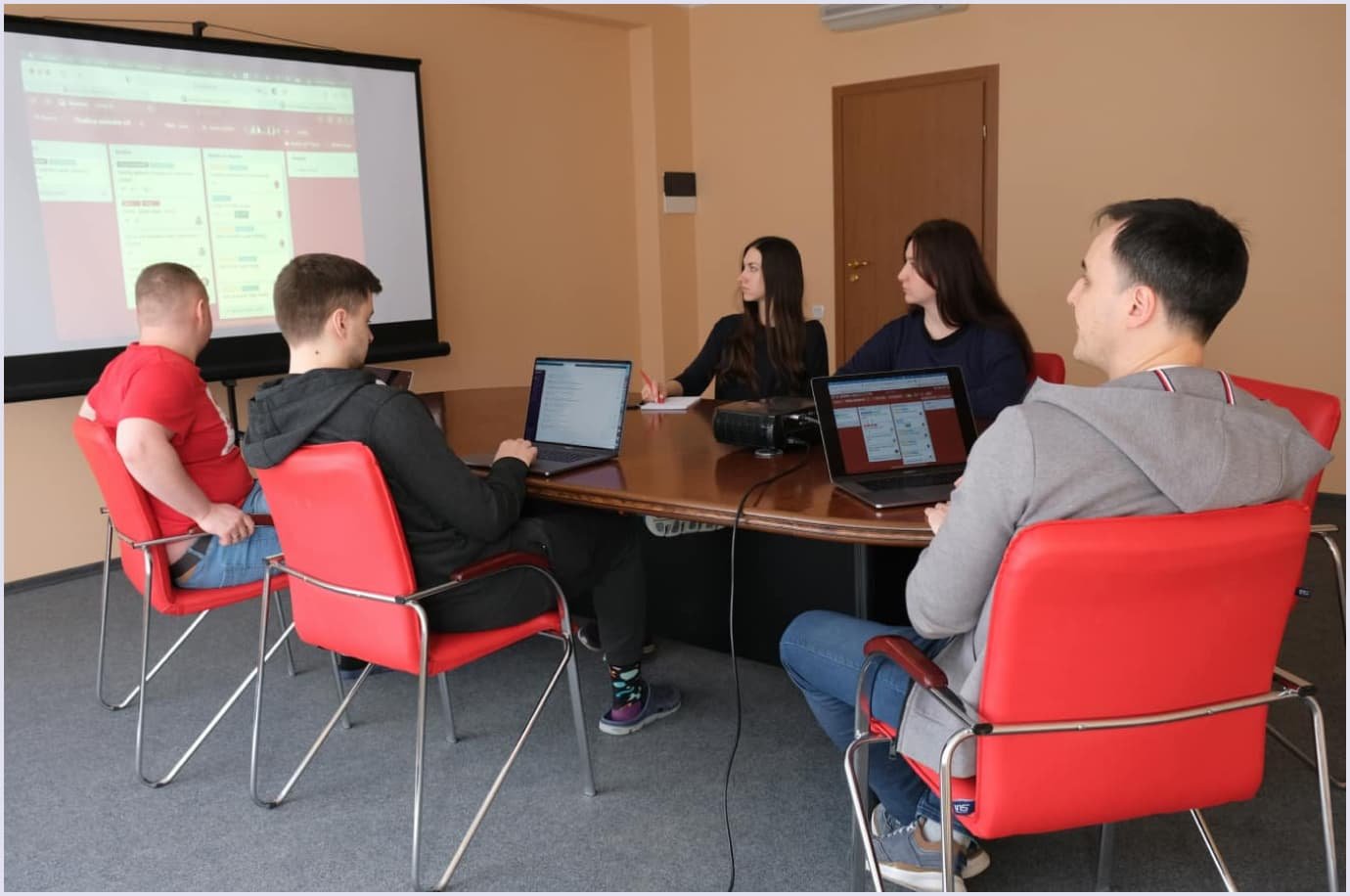
Main project discovery questions
We always prepare a bespoke product discovery plan for each new client. While the main list of questions may vary depending on the customer's business, goals and requirements, there are still some basic inquiries that we would like to run through with you.
- What is the business goal? An agency may wish to consider asking clients about the main problems their product is designed to solve. It would be beneficial to gain a deeper understanding of the overall solution concept by considering this information.
- What is the product’s target audience? It would be beneficial to define the target audience for a solution and build a buyer persona portrait. Defining user demographics, age, geolocation, habits and so on will also be a beneficial thing to think about. We believe that these steps will help us to build a customer-oriented product.
- Who are the main competitors? Competitor analysis can be a useful tool for identifying potential areas for improvement and strengths of existing products on the market. This information could be useful in helping you to stand out from the crowd and build a unique and valuable solution.
- What is the project’s timeline? One possible method for tracking and managing a project's planned activities is to set a timeframe. This could be an effective approach. It offers a helpful overview of the project's progress at a glance.
- What is the budget for the project? It would be very helpful to have this information in order to assess whether the set requirements are feasible to implement. This should result in an accurate software estimate from the development company, which would be beneficial for both parties.
In conclusion, it is crucial for vendors to make up a list of questions before a meeting with a customer. Thus, it will be easier to define the main project requirements and demands. These questions, as an integral part of a product discovery plan, should be personally adapted for each new client.

What will you get after the project discovery phase?
By the end of the discovery phase, you’ll have a clear understanding of your project and how to bring it to life.
Here’s what you’ll receive:
- Clickable prototypes;
- The list of priority features;
- Technical stack and product architecture;
- Time and cost estimation;
- Product specification;
- Recommendations on team composition.
Clickable prototypes
Clickable prototypes are much more than just visual mockups. It's an interactive, dynamic representation of your product that actually lets you simulate user journeys, test out workflows, and feel the product the way your users will. Prototypes make the gap between your vision and reality less daunting by giving early test subjects and stakeholders something tangible to explore the product with.
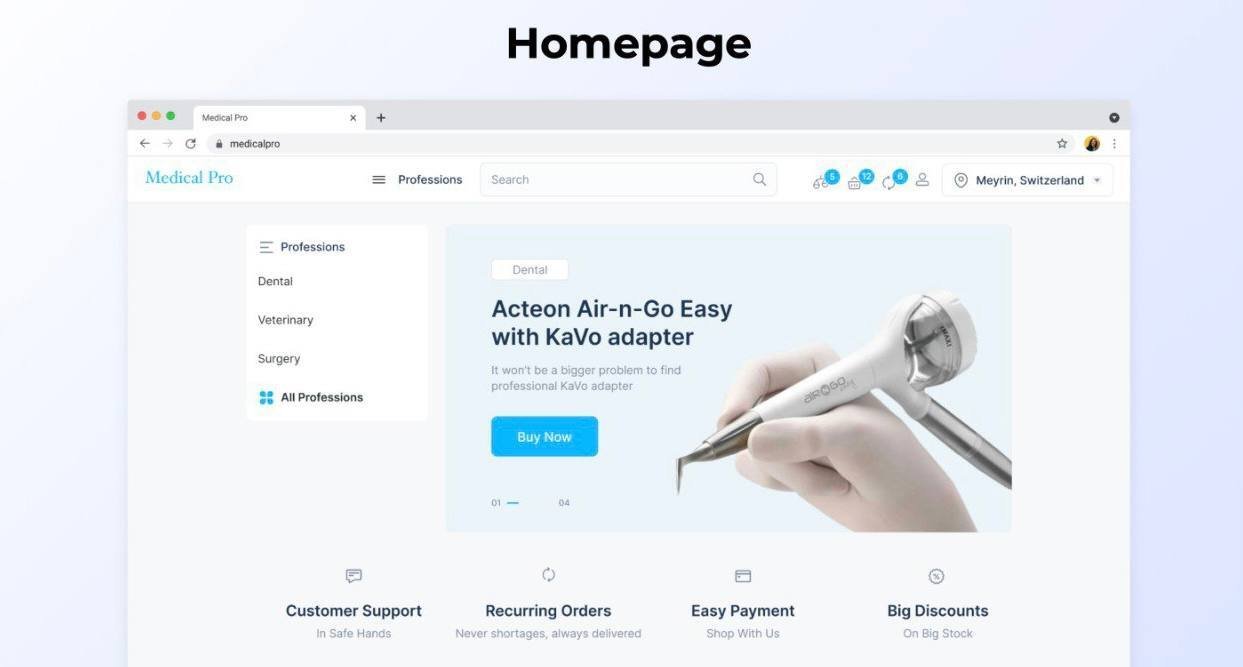
Here, a prototype allows:
- Validating design decisions regarding user experience well before the actual development of the product.
- Identify and eliminate any possible usability problems.
- Iterate quickly and refine based on feedback.
These prototypes will be important in ensuring your product provides a seamless and smooth experience right from day one.
The list of priority features
Not all features are created equal, and a discovery session ensures that the most impactful ones are identified and prioritized. This prioritized list becomes the backbone of your development roadmap. It is crafted by lining up your business goals with user needs so that what gets built first provides the most value.
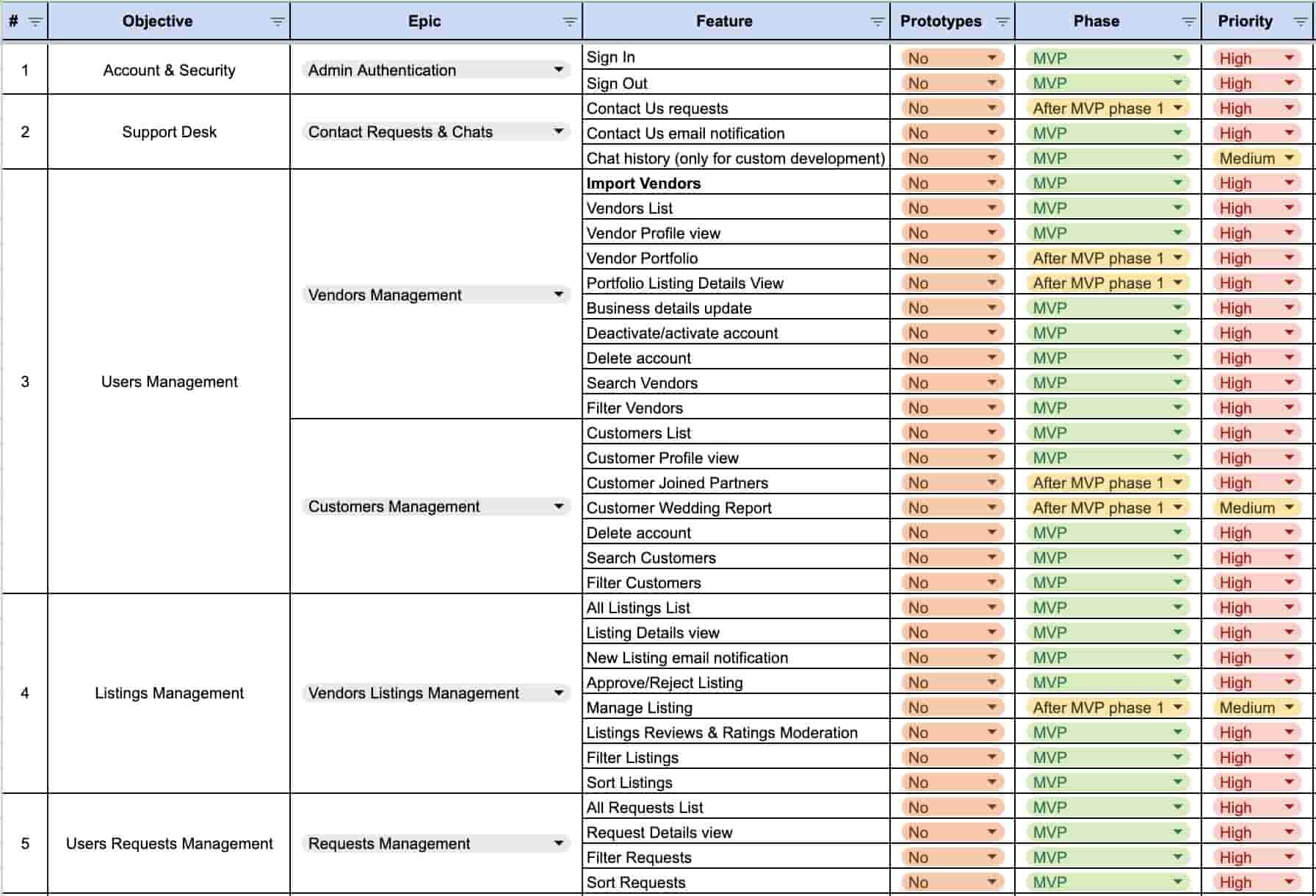
Why is this important?
- Efficient resource allocation: focus on high-value features first.
- Faster time to market: deliver a functional product sooner by emphasizing essentials.
- Clear development focus: avoid scope creep by having a well-defined feature hierarchy.
Knowing what matters most allows you to build a product that resonates with users and meets your business objectives.
Technical stack and product architecture
Your technical stack is the foundation on which your product is built, while your architecture defines its robustness, scalability, and adaptability. These are not decisions based on the trendiest tools, but on choosing the right technologies that actually meet the needs of your product.
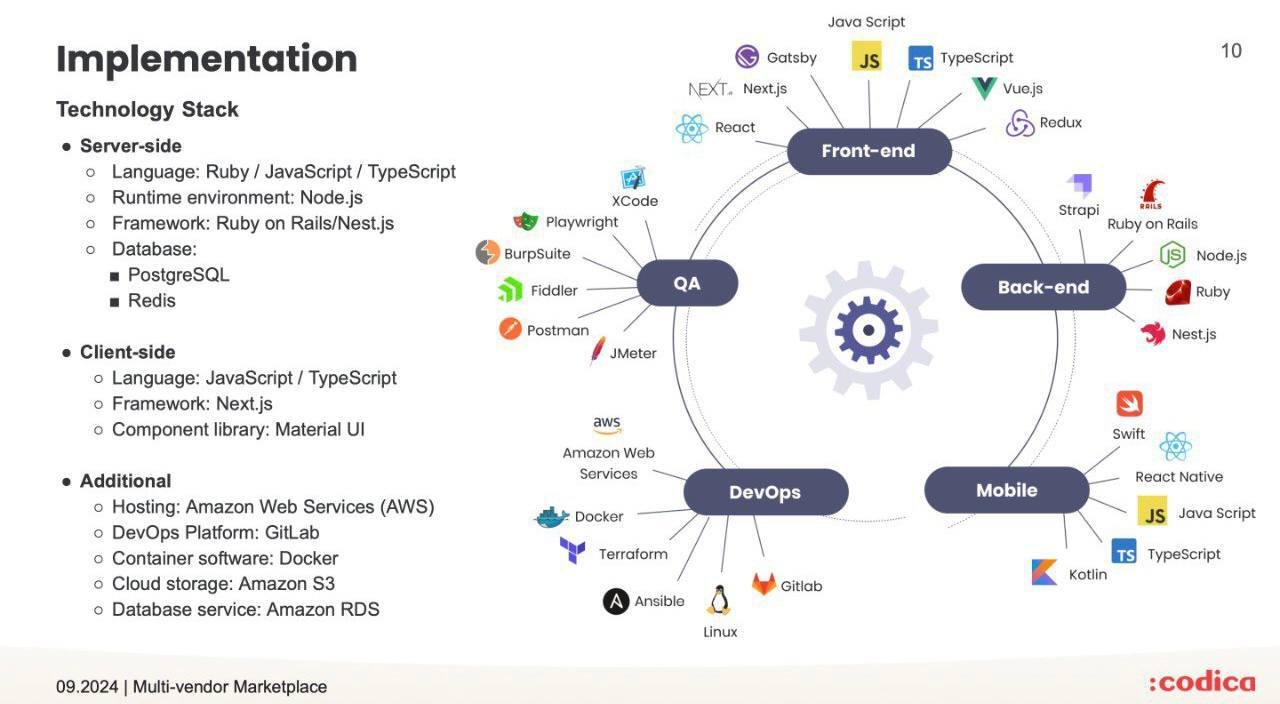
A well-thought-out technical stack and architecture ensure:
- Scalability. Your product grows effortlessly as your user base expands.
- Performance. Fast, reliable functionality under all circumstances.
- Future readiness. Easy integration of new technologies or updates.
By selecting the optimal combination of tools, frameworks, and architectural patterns, you’re investing in a future-proof product that stands the test of time.
Time and cost estimation
Time and cost estimates are more than just numbers; they are a critical part of project strategy. A detailed breakdown provides transparency and aligns expectations, putting you in control of the development process.
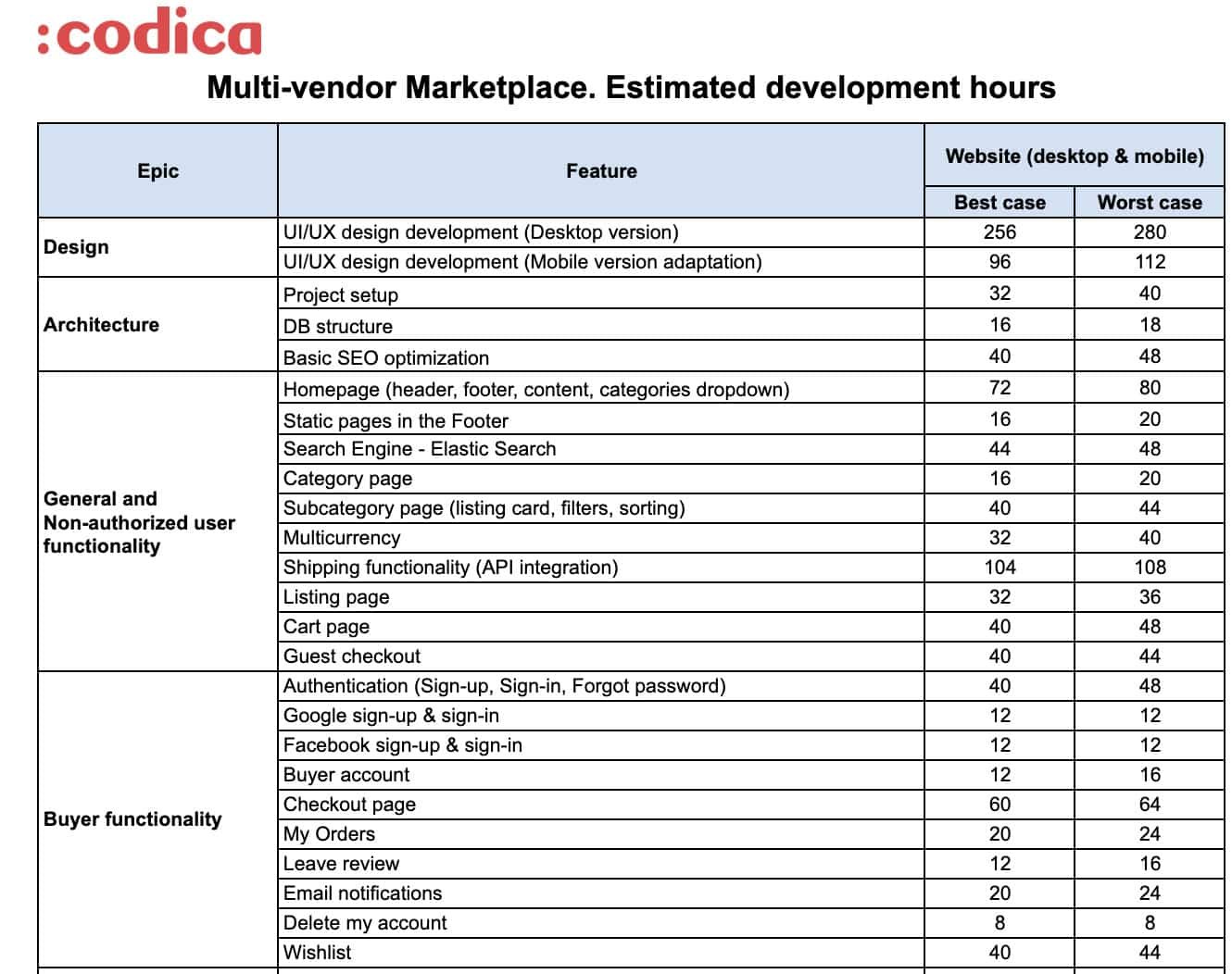
With accurate estimates, you can:
- Allocate budgets and resources with confidence.
- Avoid surprises, reduce the risk of hidden costs and delays.
- Stay on track by measuring your progress against clearly defined milestones.
Accurate time and cost estimates help you make informed decisions and build momentum throughout the project lifecycle.
Product specification
A product specification is your project's single source of truth. It outlines everything about the product, from functional requirements and user stories to design elements and technical constraints. This document will align everyone from developers to stakeholders on what needs to be done.
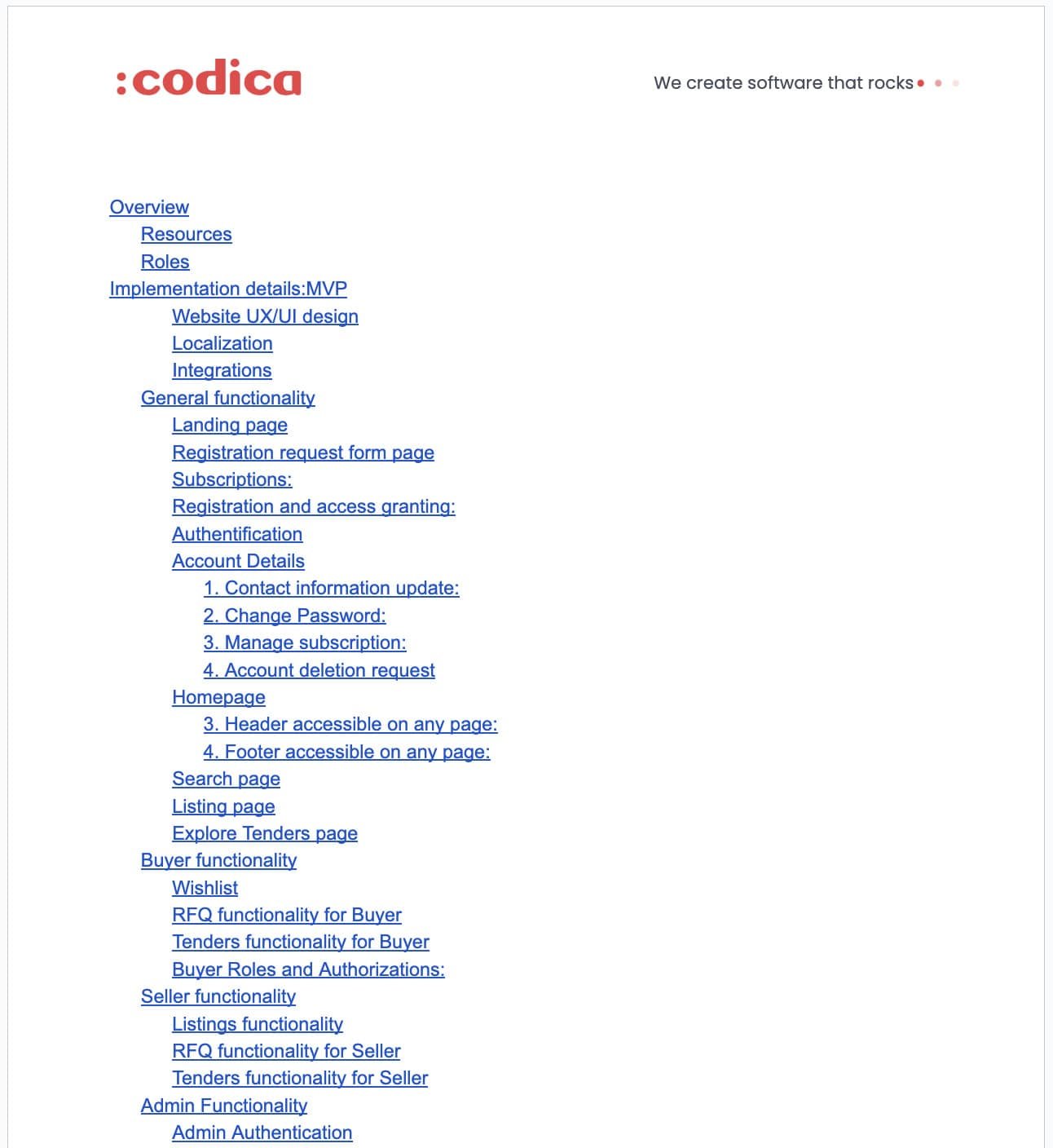
Key benefits:
- Minimized miscommunication. Clear expectations for all stakeholders.
- Streamlined development. Developers work with precise guidelines, reducing back-and-forth discussions.
- Consistent quality. Each feature is developed according to predefined quality standards.
With a strong product specification in hand, abstract ideas can be transformed into an organized plan that is ready for flawless execution.
Recommendations on team composition
The success of your project is only as good as the people working on it. Depending on the complexity and scope of your project, you will receive tailored recommendations on what your team should look like. Whether you need experienced UX designers, backend engineers, or project managers, these insights ensure you have the right experts for the job.
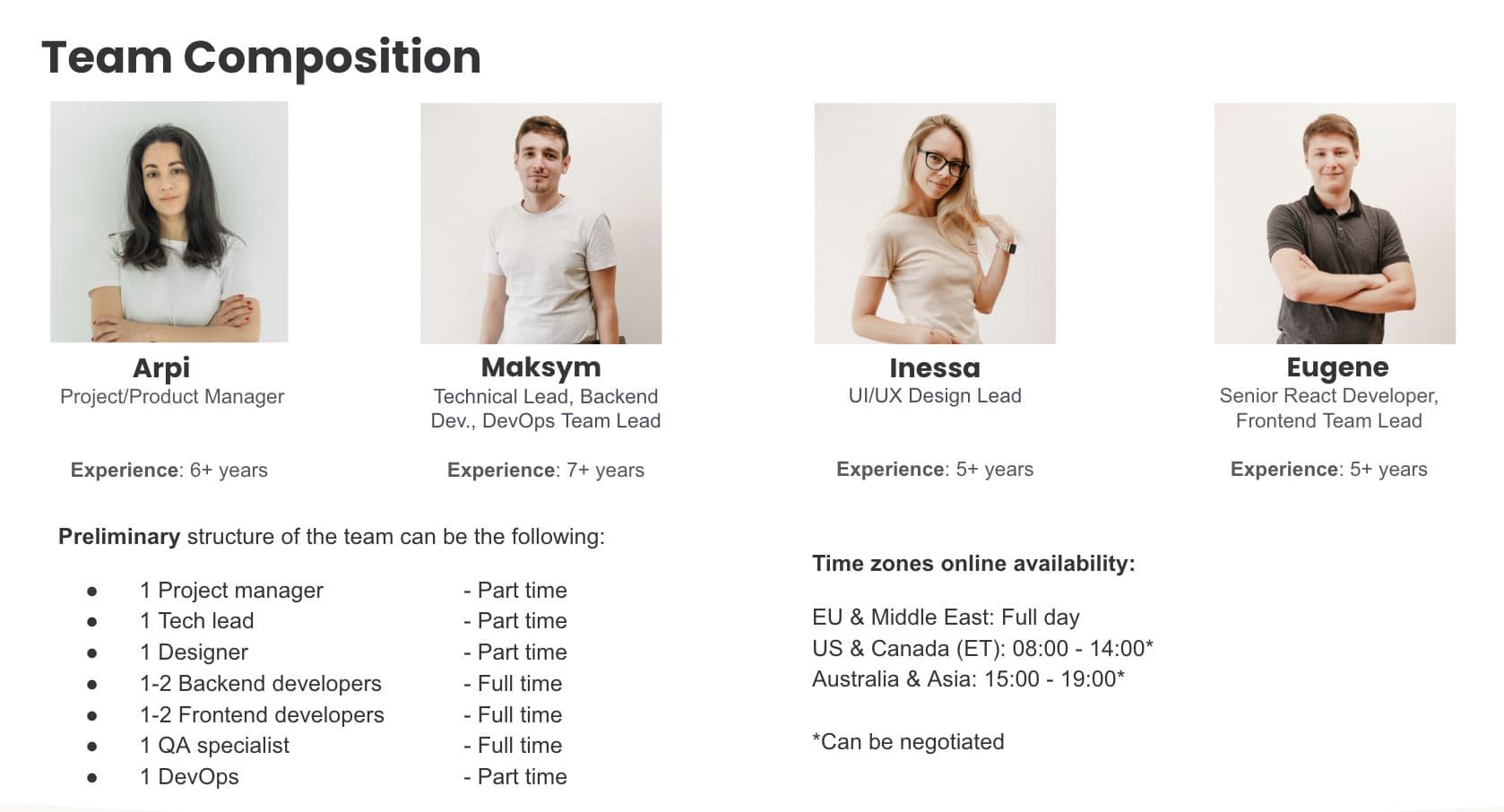
Why is team composition important?
- Efficiency. The right team members tackle tasks with expertise and speed.
- High-quality output. Specialists in their fields deliver superior results.
- Adaptability. A well-rounded team can handle challenges dynamically.
You set your project up for seamless collaboration and great results by assembling the perfect team.
Conclusion
A product discovery in software development is a useful and efficient way for clients to validate their product idea. They identify business goals, desired outcomes, and get accurate time estimates and web app development cost. This way, both customers and project teams become ready for a clear and transparent development process.
At Codica, we devote much attention to this development stage. We ask questions that allow our project team to explore the subject area, its bottlenecks, offer high-level solutions and the most suitable tech stack. Finally, we provide a client with an accurate time and cost estimate, application wireframe and clickable prototypes.
If you already have a project idea to discuss, contact us and get a free quote. Also, you may check our case studies to get a better idea of the products we deliver.
Our custom software development company will be glad to organize a product discovery phase and, with its help, turn your project into reality.
